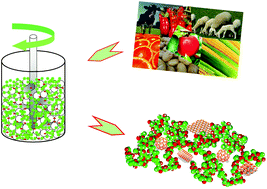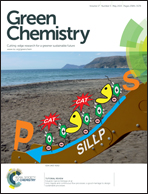Mechanical milling as a technology to produce structural and functional bio-nanocomposites†
Abstract
“Solid state mixing”, such as mechanical milling (MM), represents an ecological and economical alternative to achieve homogeneous dispersion of nano-fillers into biodegradable polymers. The advantage of working at low temperatures, without a solvent and with almost any type of polymer matrix, opens new and unexplored routes for the preparation of advanced functional materials. The use of mechanical milling contains within itself several advantages, including a strong reduction of environmental disposal, the control of the degradation processes associated with high temperature, the compatibilization of immiscible blends and the treatment of waste disposal and recycled materials. The simultaneous formation and dispersion of nanoparticles, the promotion of mechano-chemical reactions and the proper manipulation of thermo-sensitive active molecules such as antimicrobials, oxygen scavengers and antibiotics are other advantages of this process. The aim of the current work is to review the recent literature on the use of MM as a green technique to produce bio-nanocomposites. It is demonstrated how this technology could be considered an interesting option for the fabrication of novel nanostructured materials from environmental friendly resources.



 Please wait while we load your content...
Please wait while we load your content...